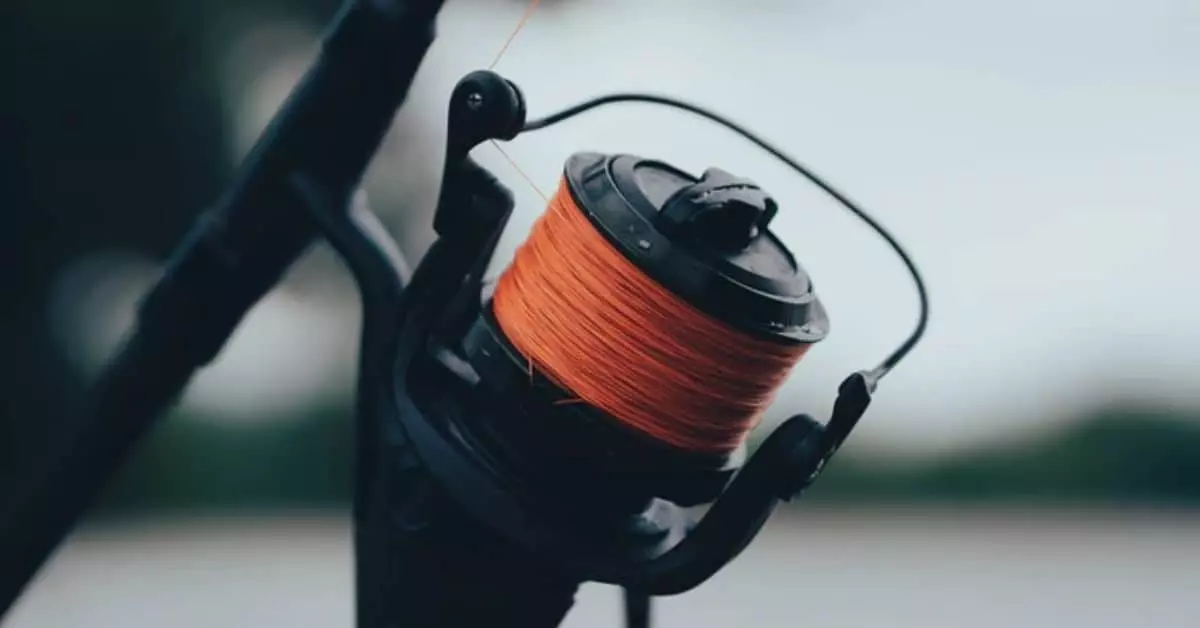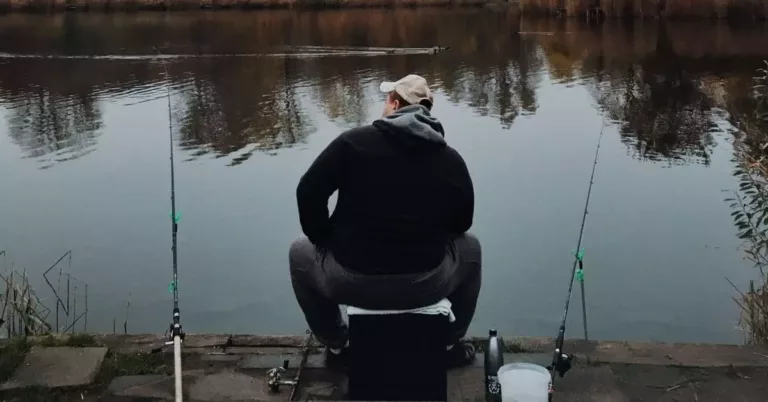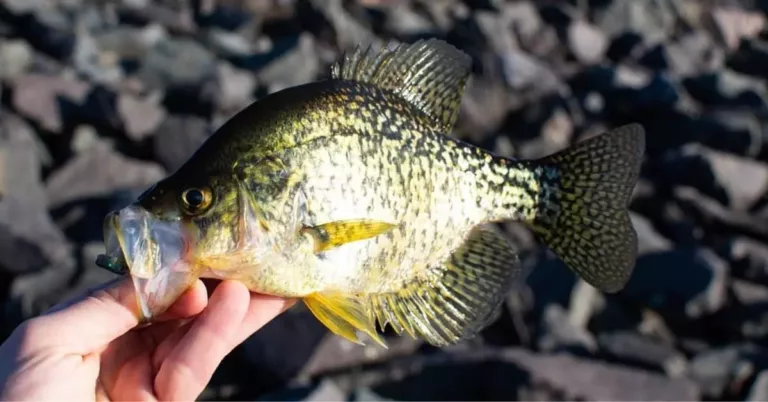Braided Line for Crappie Fishing; Is It a Good Idea?

Crappie and Line Types
When fishing for crappie one of the first considerations you must make is what type and size of line you are going to use.
In the world of fishing there are almost more kinds of fishing line than you can shake a stick at. Options like monofilament, braided, fluorocarbon, fly and even wire fishing lines abound. This could lead to some confusion about which lines you can or should use.
While there may be other options, the question today is; “Can you use braided line for crappie fishing?.”
The simplest answer is: Yes; Braided line is stronger than some other lines and does not stretch. You will need to use a flexible pole and set a light drag, to avoid pulling the hook out. But by doing so braided line is an excellent choice for crappie fishing.
Let’s look into the details of why you might not want to use braided line and how to use it successfully on your next fishing trip.
Braided Line’s Characteristics in Crappie Fishing
Braided line is made of multiple smaller fibers that are weaved or twisted together to make a single line. Think of a shoe string and how several fibers make up the single string.
Originally the braided line was woven from things such as straw and plant fibers making it one of the oldest line types in the world. However, it fell out of favor with the introduction of newer types of lines.
Recently the advent of spinning reels has caused a resurgence in the popularity of braided lines. Let’s dive into the characteristics of braided lines and how they apply to crappie.
Braided Line Strength & How it Applies to Crappie
This design allows a much higher strength ratio for the same size of line. For instance a 40lb braided line will be of a comparable thickness to a 10lb monofilament line.
Using braided line over some of the other lines will allow you to get a much smaller line diameter and thus be able to spool more line on your reels.
This increased strength is super handy when you use a lighter weight hook and fish snag areas. In these instances it is more likely that the hook bends out straight allowing you to retain all of your tackle in most cases.
In my opinion, that makes braided line one of the best options when fishing the brush piles where crappie like to school.
Braided Line Stretch & How it Affects Slab Fishing
Due to the woven design of braided line and the increased strength there is no stretch to braided line. This lack of stretch has several effects on the line.
First the line will transmit sensations much more effectively. If you like to fish with a taut line and a finger on the thread to feel the bites then a braided line will amplify this sensation.
Second is hook set, since there is no stretch in the line a hook sets much faster and harder when pulled than with some other line types that stretch under stress. The downside here, especially with crappie, is that you run the risk of snatching the hook too hard and tearing out the delicate material around their mouths. This can be combated with proper gear set up though.
Braided Line Weight & How You Can Reach Lunkers
Again due to the composition of fibers in braided lines it tends to be heavier than other lines of a similar diameter. This allows for a longer cast and a quicker sink rate if that is desired.
Crappie tend to school out in deeper waters most of the year, by being able to cast further and smoother you are easier to reach where they hide out. This can be done with a smaller line that casts easier and allows more options for lures and bait.
Braided Line Memory & How it Affects Casting for Crappie
If you have ever opened a new spool of line and had it spring off like a slinky then you are familiar with line memory. When dealing with bait casters and some spinning reels this “line memory” can result in very messy and annoying tangles in your line.
Braided line on the other hand retains less of a memory due to the multiple fibers each having their own characteristic and affecting the overall line. This allows it to unspool easier and makes for a much smoother and longer cast.
What Braided Line Weight is best for Crappie Fishing
Braided line comes in several variations including not only weight, but also diameter and number of fibers strands braided.
A 4 strand braided line is the most common but tends to be slightly abrasive and some people have complained about it wearing the eyes on their rods when fished in frequent cast and retrieve scenarios.
Newer braided lines come in 8 and 9 strands and offer superior abrasion resistance, smooth cast and extra strength.
For the purpose of crappie I suggest selecting a 5 to 10 lb line in an 8 or 9 strand design. My preferred choice on my reels when using braided lines is 10lb Hercules braided available on Amazon. This line features 8 strands for super smooth feed.
Now the exception to that is if you use a bait caster rod. (I generally don’t as my kids get them tangled up.) If using a bait casting rod, go ahead and go with a 20lb test. This is due primarily with the way the line spools. The 10lb line is so thin it can be pulled down in between the other spooled line and get stuck.
4 Tips to Fish for Crappie with Braided Line
Deciding to use a braided fishing line is all about knowing where it excels. With a few simple tips or tricks you can put a braided line to work for you, taking advantage of its strengths while avoiding the few negatives it presents.
Pair Braided Line With a Soft Hook
While a braided line can be used in any situation it is best in areas with heavy brush and hangs under the water. This is one area where a braided line can excel.
One of the major advantages of a braided line is its strength. By pairing your braided line and other rigging with a soft hook can help tremendously in retaining your gear should you hook a snag.
The Aberdeen style hook in a size 4 to 2 is ideal. My preferred option is those made by Eagle Claw. They have been intentionally tempered in a manner that causes the hook to flex or straighten before breaking. You can find them online at Amazon or almost any other location that sells fishing tackle.
Use a Quality Pole with Plenty of Flex
Due to the non stretching nature of braided lines you may find that you are ripping the hook free when you attempt to set it. You can reduce the chances of this by using a pole with plenty of flex also known as a light action.
This will allow the pole to absorb some of the pull before it transmits it into the line and down to the fish.
I suggest selecting a rod with a rating of slow in the action category for crappie fishing with a braided line.
Ensure Your Reels Drag Is Set Correctly for Your Rig
Along the same lines of using a flexible pole to avoid ripping the hook out of your crappies mouth, drag is another great tool for avoiding this.
No matter which line, leaders, or hooks you use, your drag should be set as the weakest point in your line.
Drag allows the line to spool out if too much pressure is applied and if you use this feature to set your pull at around 3 pounds then it is likely that you can avoid ripping the hook free.
Once you have snagged your crappie, if he turns out to be slightly more heavy then your drag is set you can always adjust this, or even reel it in by raising the rod and then reeling as you lower the rod, similar to how you see the big sport fish played out.
Practice Just Casting and Reeling Back In
The sensitivity in braided line due to a combination of its strength, lack of stretch and small size takes quite a bit of getting used to.
Many have indicated that the line sensitivity is second to none.
You need numerous casts and retrieves without any strikes in order to learn how the line feels. Otherwise every tiny thing in the water may feel like a strike and have you attempting to set the hook for no reason.
Common Myths about Braided Line & Crappie Fishing
Braid Can Cut through Rod Guides
There is a misconception that a braided line is coarse. The original braided lines developed by dupoint in the 1950s was coarse and frequently damaged aluminum rod guides.
However, modern braided lines are made of tiny fibers braided together and then coated with a teflon like material making them very smooth. Additionally, today’s rods and reels the rod guides are coated with a very hard plastic or metal and can easily resist being cut by braided line.
Now if you were to Apply a constant pressure in a single spot on the guide and run an entire reel across that same exact spot, then yea some damage may occur. However, in normal everyday use this is not likely to occur and should not be a major concern of yours. In these types of conditions any line could cause problems.
If Braided Line Crosses Other Line Types It Will Cut Them
While it is true that braided lines can cut other lines if they become tangled, this again is true of anytype of line.
Braided lines tend to be somewhat thinner and can wear through other lines, however this is not likely to happen in most everyday use. With that in mind it is best to try and avoid
Braided Line Requires Special Knots
Due to the somewhat rigid nature of braided line and teflon coating, it is possible that your go to knot may not be appropriate. However, by using a knot that works you can get far more strength and benefit from using braided lines, so don’t let this deter you.
Knots such as the Palomar, double Palomar, Davy and the San Diego Knot are excellent choices when using braided lines.
In Summary – Yes Braided Line is an Option for Crappie
Yes, a braided line is a great option for crappie fishing. Due to the lack of stretch, smaller diameter and greater strength braided line excels when fishing in saltwater, deep water situations and areas with brush and weeds where you may snag a line. A 10 to 15 lb braided line is your best choice in these situations. Now that you know what line to use, check out a simple guide on bait options for crappie.






